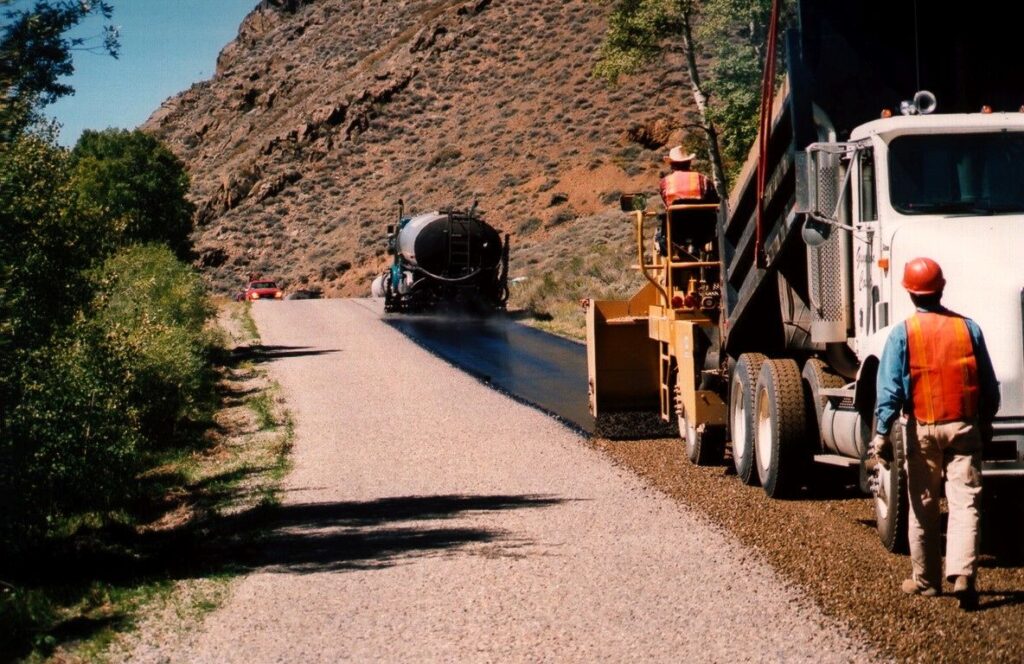 What: An asphaltic binder is sprayed on the prepared flexible pavement surface, followed immediately by an application of aggregate. The seal is then rolled to seat the aggregate in the binder. After sufficient curing, the surface is broomed to remove any loose aggregate. The binder may be applied as a water-based asphalt emulsion, a solvent-based asphalt cutback or hot applied asphalt. A fog seal may be applied over the cured and swept surface to aid in chip retention and to blacken the surface. Polymers, crumb rubber and other additives may be used to improve performance.
What: An asphaltic binder is sprayed on the prepared flexible pavement surface, followed immediately by an application of aggregate. The seal is then rolled to seat the aggregate in the binder. After sufficient curing, the surface is broomed to remove any loose aggregate. The binder may be applied as a water-based asphalt emulsion, a solvent-based asphalt cutback or hot applied asphalt. A fog seal may be applied over the cured and swept surface to aid in chip retention and to blacken the surface. Polymers, crumb rubber and other additives may be used to improve performance.
Where: Chip seals have been successfully applied on all types of asphalt pavements, from low volume rural roads over a prepared base to heavily trafficked superhighways over hot mix asphalt. The road should be structurally sound with only minor surface defects.
Why (advantages): A chip seal seals and protects asphalt pavements from sunlight, rain and snow. It improves skid resistance, seals minor cracks and surface imperfections, inhibits raveling, addresses bleeding and flushing when properly designed, protects pavement structure and extends pavement life. The Strategic Highway Research Program found chip seals, which are a relative low cost treatment, to be one of the most cost-effective pavement preservation treatments.
Why not (disadvantages): Chip seals are not appropriate over rutted, potholed, rough, moderately or severely distressed surfaces. Problems with dislodged chips causing vehicle damage and damage by snow plows have been reported, but a fog seal application over the new chip seal or use of a high performance polymer asphalt binder can mitigate these problems. Chip seals may be noisy under traffic, but use of single-sized aggregate can greatly reduce the noise. Chip seals should be done in weather dry and warm enough to allow thorough curing, and with very strict traffic control to prevent damage before the seal has thoroughly cured.
When: Ideally, chip seals should be applied when a road is still in good condition, with only minor surface problems, such as loss of friction, drying surface or very minor cracking. They may also be applied as a wearing surface shortly after cold or hot in-place recycling or other treatment or over a prepared base on rural roads. Chip seals are an excellent choice for keeping good pavements in good condition.
Estimated life extension: 6-8 years over pavements in good condition; 4-6 years on pavements in fair condition; 3-4 years for pavements in poor condition.
For more information on successful chip seals, consult the Chip Seal Checklist put together by the FP2 and FHWA.
